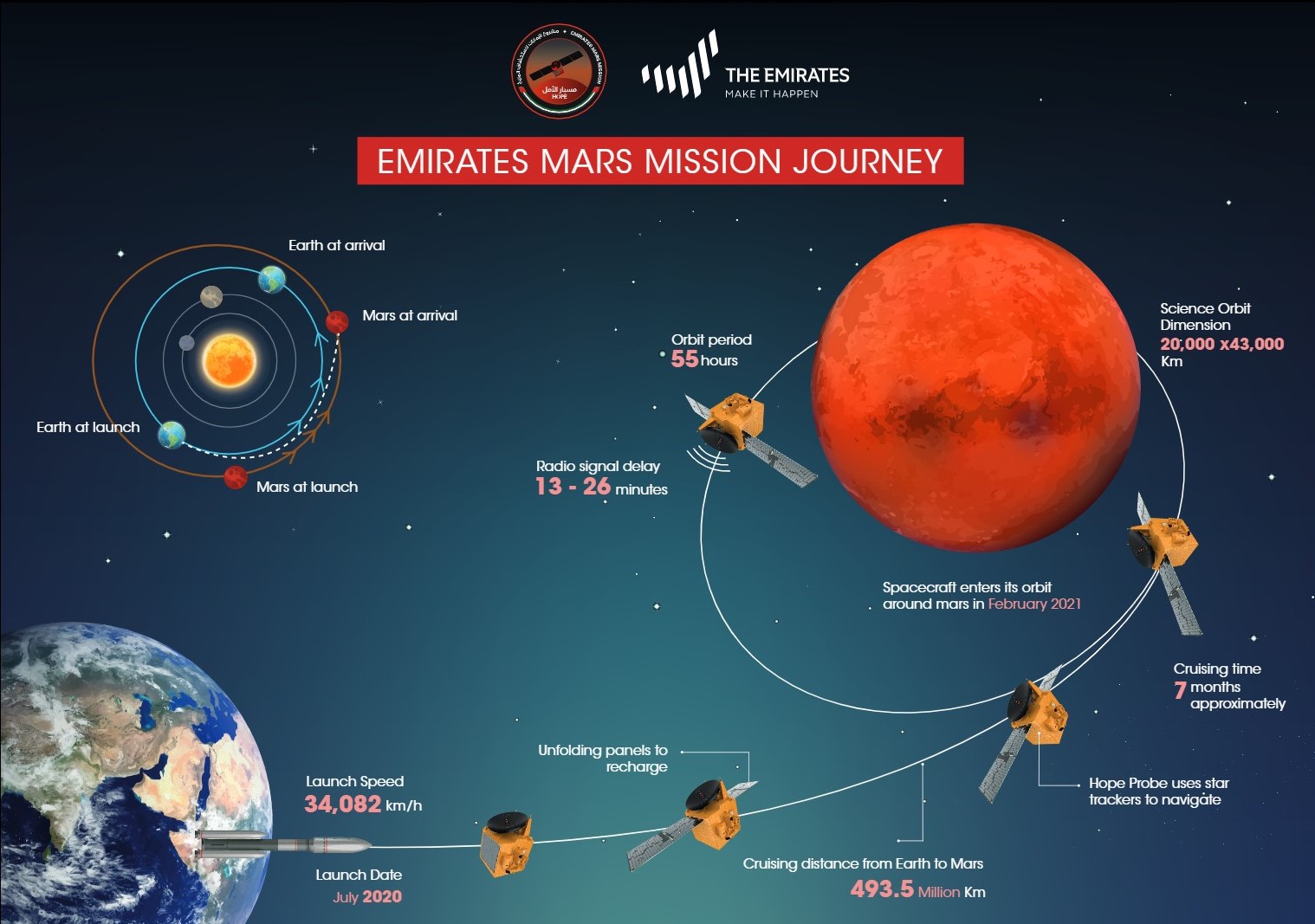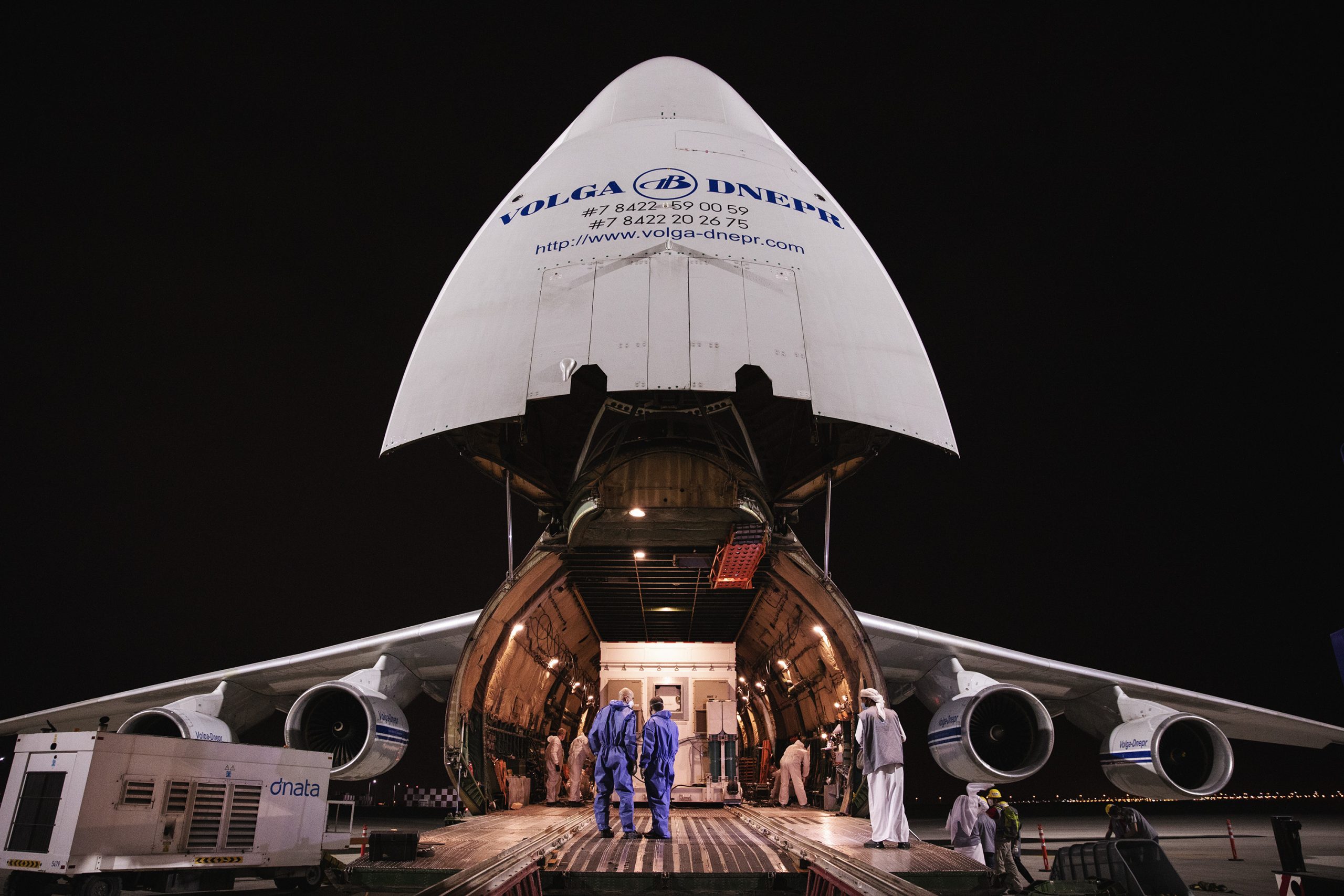Filling up the tank or charging the battery before a long journey is more of a chore than anything else – not to mention one of expense.
But for Suhail, deputy project manager and spacecraft lead, it was one of the most exciting parts of preparing for the Hope mission to Mars.

He and his team knew that with this operation complete the Hope spacecraft was almost ready for launch. The fuel – 800 kg of it – would be used by the spacecraft to help steer it on its seven-month journey to Mars and then to position it in a stable orbit of the red planet upon arrival.
Suhail had never worked with a fully fueled spacecraft before. The fueling was carried out just a few days ago and Suhail took time out from his busy schedule to talk about some of the other activities he and his team will be performing before and during the mission flight.
Suhail has been in Japan, where the mission will be launched from, since April. The spacecraft itself arrived separately by a mighty transport plane and a day before launch Suhail and colleagues will be monitoring its move to the launch pad.

With fingers crossed for a safe launch into a parking orbit of the Earth, not to mention good weather to allow the launch in the first place, Suhail will then be turning to a check out all of the spacecraft’s on-board systems.
Once all is passed ok the spacecraft is instructed to leave Earth orbit on its multi-million-kilometer journey to Mars.

Before Hope, Suhail worked on Dubai-Sat-1, an Earth Observation satellite.
Suhail explained how working on Hope has been entirely different. For a start, once an Earth satellite is in orbit there is relatively little the ground controllers need to do to keep it working – just the occasional instruction beamed up to adjust its orientation slightly.
But an interplanetary spacecraft like Hope, travelling from Earth to a different planet, requires careful monitoring by Suhail and his colleagues using different communication systems; one that is used when the spacecraft is near Earth and a more powerful one for bridging the enormous distances when it is approaching Mars.
Even so, it will take about 20 minutes for Suhail’s instructions to reach Hope at Mars and another 20 minutes for him to receive the spacecraft’s response!
This communication will also involve further collaboration with the team’s colleagues in the United States, this time with those teams receiving signals from Hope when that part of Earth is facing Mars.
It is this teamwork, in UAE, the United States and in Japan, that Suhail highlights as the most enjoyable part of his job.

As a boy he became interested in science and engineering and when an opportunity to work on space systems presented itself he said yes without a moment’s thought. It’s hard work, Suhail says, and the more of a challenge it is the better.
But he also knows how to relax, and he particularly enjoys science fiction stories like The Martian and, to stretch the imagination a little further, Interstellar.
But to budding space engineers of the future his advice is … just go for it.
The Hope mission successfully launched on its journey to Mars on 19 July 2020.
